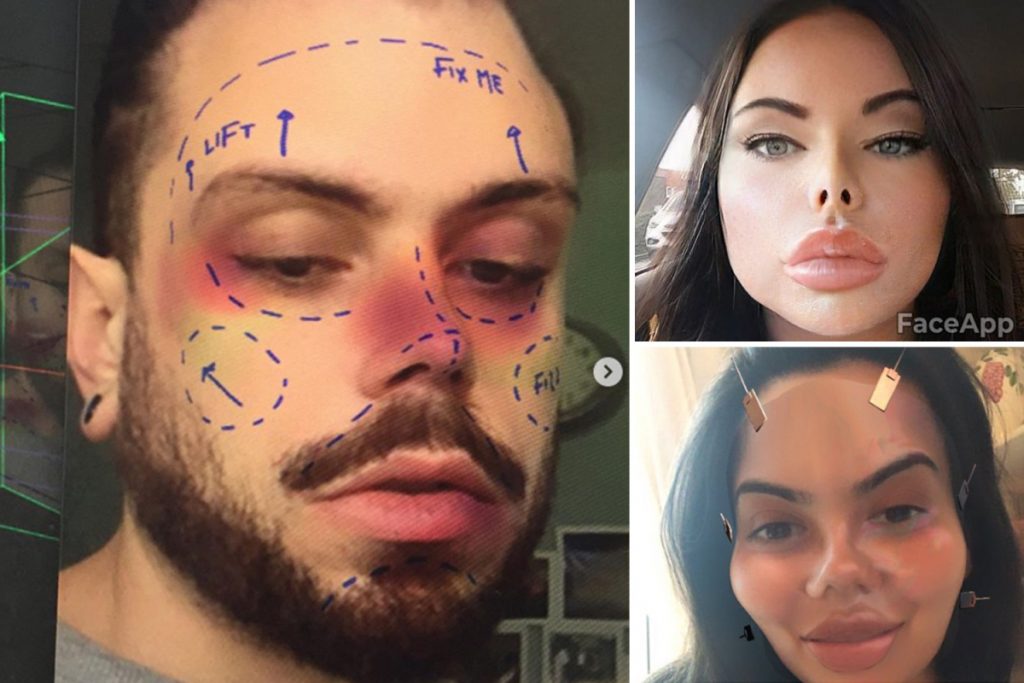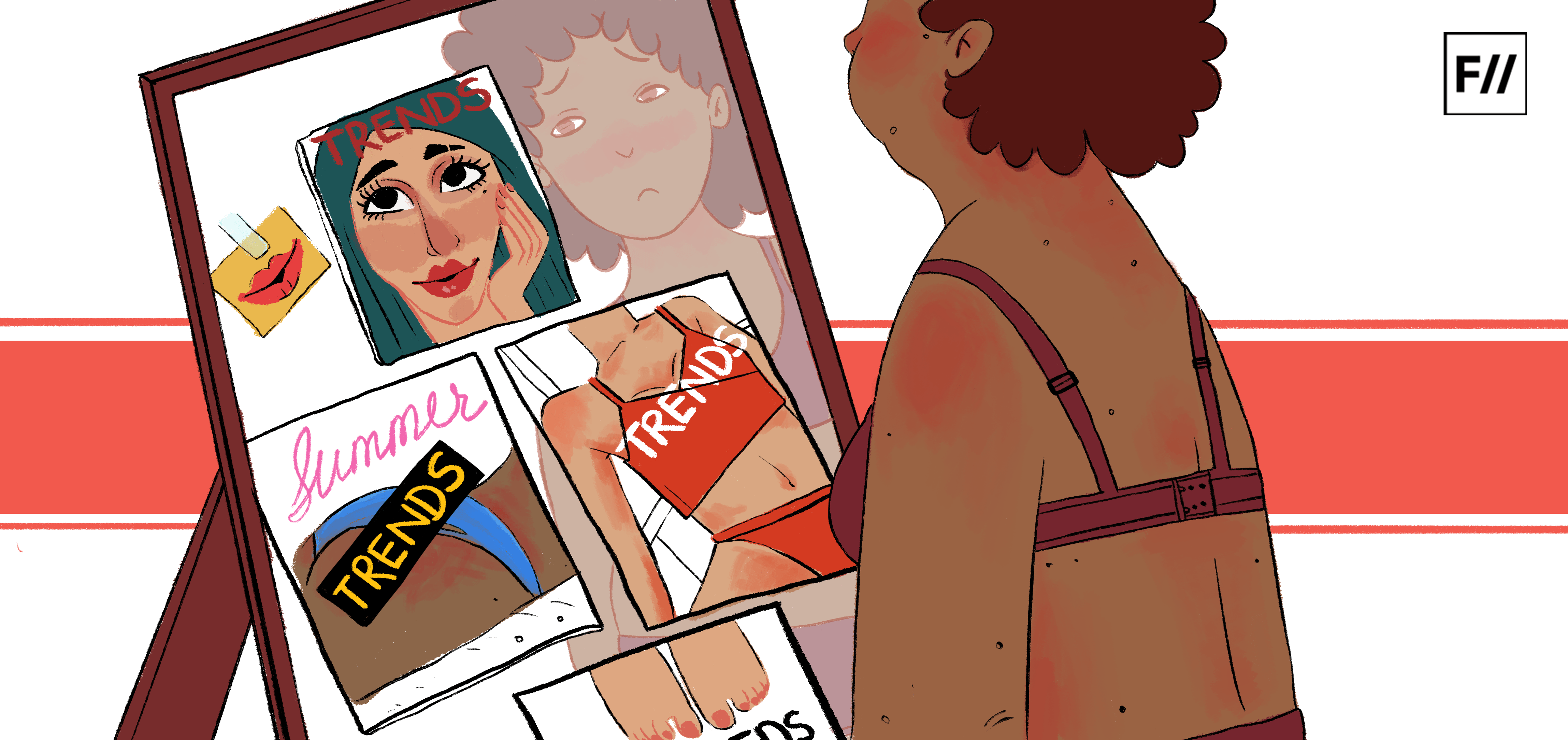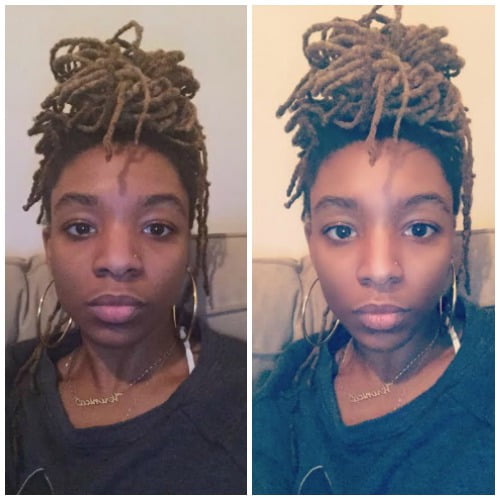I was at a sleepover with my two friends. Our activities primarily consisted of dancing, stuffing our faces with cake, discussing human rights and politics, watching TikTok videos and clicking selfies—trying different filters on. Filters that changed our species, age, gender, voice or played Kasoor by Prateek Kuhad. The fun stuff, I believe.
Then came the “beauty” filters, the ones that gave us longer eyelashes, plumper lips, flushed cheeks with freckles, bigger shiny eyes, perfectly contoured face, unblemished smooth skin and what not! All of it seemed pretty harmless up until the moment one of my friends accidentally clicked out of it and went from staring at her “perfect” self to her “real” self and asked, “How do I make this filter my permanent face?”
My friend’s question left me with conflicted thoughts and made me wonder how much of an effect do Instagram filters really have on us? Who decides what filter makes you look “more beautiful” ? Do these filters have enough power to make us want to surgically transform our faces to our digital selves? Why don’t I more often send selfies without any filter on? Is it just something I try on for fun, or are these instant virtual makeovers unknowingly affecting my perception of being beautiful, yet again, even after trying to unlearn the false standards for so many years.
Seeing advertisements with photoshopped hourglass shaped models who were whitewashed and airbrushed never played with our minds the way these face filters do. Face filters help us experience makeovers multiple times a day with tons of variations. With one tap they suddenly show us an augmented reality—one that can be achieved with a little nip and tuck.
How are we expected to deconstruct such standards completely when looking “perfect” is a filter away?
Let’s discuss the rise of normalisation of face filters and why it’s problematic.
Everything on the internet is heavily edited—this has been established long ago. People are becoming more aware about how the influencers and advertisements promote unattainable and unrealistic body structures. Seeing advertisements with photoshopped hourglass shaped models who were whitewashed and airbrushed never played with our minds the way these face filters do. Face filters help us experience makeovers multiple times a day with tons of variations. With one tap they suddenly show us an augmented reality—one that can be achieved with a little nip and tuck. I would be lying if I said I never seriously considered getting plastic surgery done in order to look more aesthetically pleasing. The thought definitely crossed my mind and the worst part is that it might be just an outcome of over analysing my “flaws”.
Also read: Why I Learnt To Decolonise Eurocentric Beauty Standards
Snapchat introduced face filters in 2015. It provided a wide range of special effects that were intended to be used for entertainment—turning faces into animals, rainbows flowing out of mouths, becoming a zombie and all that jazz. Snapchat Lenses was an instant hit among users. Then in 2017, Instagram introduced their version of stories and in last August gave its users the option of uploading their own filters.
The feature that was once meant for unleashing creativity and self exploration suddenly got bombarded with filters like “Fix Me”. The filter mimicked how a cosmetic surgeon might map out the areas they were going to operate on. It suggested how the user could undergo an eyebrow lift and that fillers could be inserted into the cheeks. Instagram banned such filters citing body image and mental health concerns.

In comparison to filters like “Fix Me” or “Bad Botox”, other filters might look non-toxic but that isn’t true—a lot of work needs to be done in addition to banning them. There is a need to redefine the ideals of beauty in pop culture and mass media and that requires better representation. Filters usually adhere to the western standards of beauty. Most of them automatically chisel your jawline, lighten your skin tone and the colour of your eyes.
How different is it than those fairness creams commercials we all are so tired of watching?
A study published in the journal JAMA Facial Plastic Surgery found that face filters on apps are leading to a phenomenon called “Snapchat dysmorphia.” People, who want to look the way they do in filters, are going to extra lengths to achieve it. Body dysmorphia is a mental health condition that causes people to excessively worry about flaws in their appearance. Snapchat or Selfie dysmorphia is a category of this condition but involves people becoming obsessed with how they look in selfies and wanting to look like a filtered version of themselves.
The feature that was once meant for unleashing creativity and self exploration suddenly got bombarded with filters like “Fix Me”. The filter mimicked how a cosmetic surgeon might map out the areas they were going to operate on. It suggested how the user could undergo an eyebrow lift and that fillers could be inserted into the cheeks. Instagram banned such filters citing body image and mental health concerns.
Younger generations and adolescents are the most vulnerable to harmful consequences in real life. In a world, where the society is already obsessed with conventional standards of beauty—these filters do not necessarily make overcoming insecurities any easier. The filters make us look good, but feel worse. More teenagers, especially girls, asking to look like their selfies is definitely a cause of concern of growing mental health problems.
The flawlessness pouring out of our screens can have a detrimental effect on one’s self esteem and affect their body image negatively, increase the risk of depression, cause elevated levels of anxiety or act as a trigger and lead to eating or body dysmorphic disorder. Mental illnesses do not make you weak, they are very much real and taking help of a mental health professional to safely discuss these struggles is a great place to start.
Also read: Comic: The Ugly Side Of The ‘Beauty’ Industry
Counteracting the impact might take a lot of time and introspection but will ultimately be worth it. Acknowledging the problem and unlearning is the first step towards making that change. The key is in always finding a balance. Putting on a filter for amusement or confidence is not the issue—but obsessing over that “perfect image” and letting it decide your self worth is. One size does not and will not ever fit all.
Knowing your intention behind using social media filters is imperative. Be mindful of the content you consume. Quit comparing and don’t be critical of yourself. Unfollow pages which negatively influence your perception of body positivity. Practice affirmations. Lastly, help in building a safer and better space on the internet where we can all embrace are bodies unapologetically.
Featured Image Source: Feminism In India





